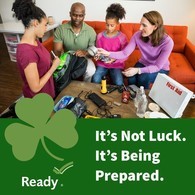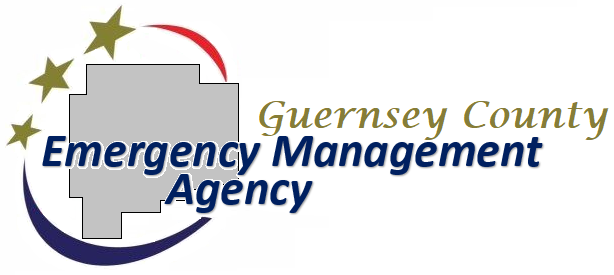|
For Immediate Release: November 11, 2020
Winter Safety Awareness Week is November 15-21
Columbus, OH – This winter, while Ohioans focus on protecting themselves from COVID-19 and other contagious illnesses such as colds and the flu, the Ohio Committee for Severe Weather Awareness is also reminding citizens about the importance of preparing for winter weather and winter emergencies.
“Take the time during Winter Safety Awareness Week to ensure that your emergency supply kits are well-stocked, and your homes and vehicles are prepped and conditioned for the upcoming winter months,” said Ohio Emergency Management Agency Executive Director Sima Merick. “It’s also a good time to update your safety plans, practice those plans, and prepare for winter-related incidents.”
Governor Mike DeWine and Lt. Governor Jon Husted have declared November 15 through 21 as Winter Safety Awareness Week, which encourages Ohioans to take simple steps to help minimize risks associated with winter weather. Click to view the 2020 Winter Safety Awareness Week Resolution.
According to the annual National Oceanic and Atmospheric Administration’s (NOAA) U.S. Winter Outlook, the 2020-2021 temperature map shows that below-average temperatures are likely in parts the North and above-average temperatures likely in the South. The U.S. Precipitation Outlook shows wetter-than-average conditions most likely across the northern tier of the country, extending from the Pacific Northwest, across the Northern Plains and Great Lakes, and into the Ohio Valley.
Already this month, Ohio has seen changes in weather. On Nov.1, the National Weather Service (NWS) issued wind and winter weather advisories for northeast Ohio. Strong winds caused power outages for thousands of residents in Ashtabula, Lake, and Cuyahoga counties. Many areas in Ohio also saw light snow on Nov. 1. Temperatures have also fluctuated this month, from highs in the 70s, to lows in the 20s.
“Keep in mind, Ohio sees more than snow and ice during the winter,” said Merick. “On January 11, this year, the NWS confirmed two EF0 tornadoes in Miami County. This shows that no matter what season we’re in, it’s important to be prepared for all risks and emergencies.”
The Ohio Committee for Severe Weather Awareness recommends the following winter travel, safety, and preparedness tips:
Holiday safety in a COVID-19 environment. Celebrating the holidays virtually or with members of your own household poses the lowest risk for COVID-19 spread.
If you are planning to host or attend a social gathering during the holidays, there are a few important factors to consider:
- Information on the number of positive COVID-19 cases in Ohio, including breakdown by county, is available on the Ohio Department of Health’s website.
- Gatherings with people outside of your household pose a higher risk of COVID-19 spread.
- Indoor gatherings pose more risk than outdoor gatherings.
If you are planning to travel this year for an upcoming holiday, the Centers for Disease Control and Prevention offer some factors to consider:
- Know your travel destination’s COVID-19 positivity rate. The more positive cases of COVID-19 there are at your destination, the more likely you are to become infected during travel and spread the virus to others when you return. Check each state’s positivity rate.
- Wear a mask to keep your nose and mouth covered while in public settings, including on public transportation and in transportation hubs, such as airports and bus or train stations.
- Avoid close contact by staying at least six feet apart from anyone not from your household.
- Do not travel if you are sick or if you have been around someone with COVID-19 within the past 14 days. Do not travel with someone who is sick.
Practice fire safety and prevention. With the winter months, holiday season, and a continuing pandemic, people will be indoors more, and will cook, decorate, and possibly entertain more, which can lead to more home fires. The best protection is to have working smoke detectors in the home. Test your detectors monthly. Conduct fire drills. Change the batteries in your smoke and carbon monoxide detectors twice a year – when you change your clocks, change your batteries. Have auxiliary heaters, furnaces, and fireplaces checked or serviced before using. Cooking-related fires are the number one cause of home fires. Never leave cooking food unattended. Keep towels, potholders, and paper products away from the stove’s heat sources.
Prepare your home for winter. Remove and cut away low-hanging and dead tree branches. Strong winds, ice, and snow can cause tree limbs to break and could cause damage to your home. Have your gutters cleaned. Snow and ice can build up quickly if clogged with debris.
Prepare winter emergency supplies kits for the home and vehicle. Check the expiration dates on nonperishable food items, bottled water/beverages, and medications. Winter emergency kits should include flashlights, extra batteries, blankets, coats, hats, gloves, a battery-operated radio/weather radio, first aid kit, cell phone and charger, and enough nonperishable food and water (one gallon per person, per day) to sustain every household member for several days. Store food, bottled water, and supplies for your pets, as well.
The Ohio Committee for Severe Weather Awareness (OCSWA) is comprised of 17 local, state, and federal agencies and organizations. For additional information on winter weather safety and severe weather preparedness, visit OCSWA’s website.
# # #
For additional information, contact:
Kelli Blackwell at (614) 799-3694
kblackwell@dps.ohio.gov
|




